Occupational Safety Training in Confined Spaces
99,000 ₫
Note: The above price is calculated for one person and may fluctuate depending on the number of trainees participating in the course and market movements. For more accurate pricing support, please refer to the quotation table or contact our consulting staff directly.
The Confined Space Safety Training course is a Group 3 occupational safety training program. The course aims to raise awareness among trainees about accident prevention during work in confined spaces. Accordingly, the occupational safety training content is strictly based on Article 18 Decree 44/2016/ND-CP.
Table of Contents
Toggle1. Overview of confined spaces
a. What is a confined space?
- A confined space work environment is a work environment that does not have enough space or enough wide space for employees to work comfortably and safely. This can occur in many occupations, such as in computer rooms, manufacturing workshops, vehicles, or construction sites.
- In a confined space work environment, employees may have to work in small, enclosed, narrow spaces or in hard-to-reach locations, such as high, deep, or underground areas. Working in a confined space can cause a number of health, safety, and psychological problems for employees, so it requires occupational safety measures and proper work procedures.

b. Types of environments called confined spaces
The types of work environments called confined spaces include:
- Computer room: This is the main work environment for technical staff or technical support staff, where they have to work in a small, narrow space, with little air, and the air pressure is often kept at a higher level than the outside environment.
- Electrical system control room: is a special room designed to control, monitor and maintain electrical systems in a building, a factory or a manufacturing facility. It is the control center for electrical equipment, machinery, measuring devices and other electrical systems used in the manufacturing process, ensuring safety and efficiency for the entire electrical system.
- Mine shaft: this is a work environment in confined spaces with poor air circulation and high humidity, which can be dangerous to the health of those who work in it.
- Sewerage is a natural environment in drainage and wastewater treatment systems. It includes culverts, pipes and drainage channels used to move water and waste from factories, residential areas, schools and industrial facilities to wastewater treatment plants.
- Pipeline: Working in a gas pipeline is a job that requires high skills and experience, especially when the space in the pipeline is narrow. Workers must be well prepared and follow safety procedures to ensure their lives and health.
- Well: Working in a deep well is a dangerous job and there is a risk of health problems, especially when there are no proper safety measures. The main dangers of working in a deep well include: lack of oxygen, fire and explosion, toxins…
- Tank: is a type of construction with the function of containing liquid or gas in a confined space, often used in the chemical, petroleum, food and beverage industries. However, due to the limited space, many risks related to health and occupational safety can occur when working in a tank with a narrow space.

c. Specific jobs in confined spaces
Specific jobs in confined spaces often involve working in cramped spaces, limited movement and air. These jobs often include:
- Installing and repairing electrical, water, and gas systems in cramped spaces such as under stairs, in walls or on ceilings.
- Repairing and maintaining equipment such as air conditioners, heaters, water pumps, electronic devices in confined spaces.
- Installing and repairing lighting systems in confined spaces.
- Painting and plastering surfaces in confined spaces.
- Dismantling and moving items and furniture in confined spaces.
- Working on construction sites, industrial areas in confined spaces.
- Installing and repairing security systems, fire fighting systems in confined spaces.
- Working in confined spaces on vehicles such as cars, airplanes, trains, and ships.
- Repairing and maintaining mechanical equipment, such as water pumps, suction pumps, generators in confined spaces.
- Working in an environment with polluted air or high temperatures, such as in a factory or industrial park.

2. Overview of occupational safety training course in confined spaces
a. What is occupational safety training in confined spaces?
- Occupational safety training in confined spaces are training sessions to equip workers with awareness of how to prevent workplace accidents. Accordingly, those who work directly in confined spaces belong to group 3.
- The occupational safety training course will help workers recognize and prevent dangers, and limit the risks of workplace accidents during work.
REGISTER FOR OCCUPATIONAL SAFETY TRAINING SERVICES
b. Training duration
Initial safety training duration
- The total training duration is at least 24 hours, including the exam time.
- 8 hours of theoretical study on the system of policies and laws on occupational safety and health.
- 8 hours of theoretical study on basic knowledge of occupational safety and health.
- 4 hours of theoretical study on specialized training content.
- 2 hours of practical training on specialized training content.
- 2 hours of theoretical exam at the end of the training course.
The safety training center will allocate the time into many training sessions depending on the time arrangement for the staff. But normally, there will be 6 training sessions, the course will last 3 days, on the condition that the manufacturing enterprise can arrange continuous study time.
Periodic safety training duration
- Before the occupational safety card expires, if workers want to renew it, they must undergo a periodic occupational safety training course, with the periodic safety training duration being at least 50% of the initial safety training duration.
Explanation: The total periodic occupational safety training duration is at least 12 hours, including the exam time. After completing the periodic training course and passing the exam, workers will have their occupational safety card renewed or extended.
c. Content of the training course
| No. | TRAINING CONTENT | TRAINING DURATION (HOURS) | |||
| Total | Of which | ||||
| Theory | Practice | Exam | |||
| I | System of policies and laws on occupational safety and health | 8 | 8 | 0 | 0 |
| 1 | Overview of the system of legal documents on occupational safety and health. | 6 | 6 | ||
| 2 | System of technical standards and regulations on occupational safety and health. | 1 | 1 | ||
| 3 | Specific regulations of state management agencies on occupational safety and health when building new, expanding or renovating works, facilities for manufacturing, using, preserving, storing and inspecting types of machinery, equipment, materials, and substances with strict requirements on occupational safety and health. | 1 | 1 | ||
| II | Basic knowledge of occupational safety and health | 8 | 8 | 0 | 0 |
| 1 | Basic knowledge of dangerous and harmful factors at the workplace. | 4 | 4 | ||
| 2 | Methods of improving working conditions. | 1 | 1 | ||
| 3 | Safety culture in manufacturing and business. | 1 | 1 | ||
| 4 | Rights and obligations of employers and employees; policies and regimes on occupational safety and health for employees; functions and duties of the occupational safety and health network. | 1 | 1 | ||
| 5 | Occupational safety and health regulations, signs, occupational safety and health signs and use of safety equipment, personal protective equipment; professional skills, first aid for workplace accidents, and prevention of occupational diseases. | 1 | 1 | ||
| III | Specialized training content | 6 | 4 | 2 | 0 |
| General knowledge about types of machinery, equipment, and substances that generate dangerous and harmful factors; analyzing, assessing, and managing risks related to occupational safety and health, safe work procedures with machinery, equipment, and substances with strict requirements on occupational safety and health. | 6 | 4 | 2 | ||
| IV | Occupational safety training exam at the end of the training course | 2 | 2 | 0 | 0 |
| Total | 24 | 22 | 2 | ||
See more training content of 6 groups
d. Occupational safety card
After completing the occupational safety training course and passing the exam, the worker will be issued an occupational safety card (in practice, also called a Group 3 occupational safety certificate).
In which, the Group 3 safety card will clearly show information such as: full name, date of birth, job and specific work environment. At the same time, there will be the training duration, a red seal and a signature confirming the completion of the training course.
According to the regulations on issuing safety cards specified in clause 2 of article 24 of decree 44/2016/ND-CP, there are 2 cases:
- In case the employer and the employee have an employment contract with each other, the employer must sign, seal and initial the safety card for the trained person in Group 3 after undergoing the training course from the occupational safety training unit and passing the exam.
- In case of freelance, seasonal workers, without an employment contract, the training unit must sign, seal and initial the safety card for the worker after undergoing the training course from the occupational safety training unit and passing the exam.

3. Recognizing hazards in confined spaces
The work environment in a confined space has many different hazards, including:
- Confined spaces often lack oxygen and ventilation, posing a danger to the health of workers. The air in this space often contains a lot of toxic fumes, dust and pollutants.
- Some jobs in confined spaces can pose a fire and explosion hazard, such as working with flammable or explosive substances, or using electronic devices, mining lights, welding machines, mobile phones…
- Jobs in confined spaces often require moving in a small space, so the risk of collision and being punctured by foreign objects is very high.
- Work environments in confined spaces often have high or low humidity and temperature compared to the outside environment. This can cause health problems for workers, including fever, cold, headache, difficulty breathing, discomfort…
- Jobs in confined spaces are often associated with the effects of ultraviolet and X-rays, especially in the electronics, tobacco, security, and medical manufacturing industries.
4. Safety measures in confined spaces
When working in a confined space, ensuring safety is very important. Here are some safety measures to be implemented:
- Before entering a confined space, the person performing the work needs to carefully check the space, identify all possible dangers and prepare all necessary safety equipment and gear.
- For confined spaces that may have foul or toxic odors, the person performing the work needs to ensure ventilation and minimize the impact of toxic substances to the lowest possible level.
- The person performing the work needs to use full personal protective equipment such as safety glasses, masks, gloves, chemical-resistant clothing, anti-slip shoes, safety ropes, etc.
- When working in a confined space, the person performing the work needs to have a quick rescue plan and mechanism in case of an incident or accident.
- Avoid working in a confined space for too long and need to have breaks to ensure health and safety for yourself.
- The person performing the work needs to be fully trained and trained in occupational safety on the necessary skills and safety measures when working in a confined space.
- Periodically organize workplace environment monitoring in factories, collect and analyze harmful factors to workers, thereby adjusting to reduce the level of harm to prevent occupational diseases for them.
These safety measures will help minimize the risk of accidents and ensure the health of those working in confined spaces.

5. Types of accidents in confined spaces
The types of accidents when working in confined spaces can include:
- Confined spaces often have toxic gases accumulated and unable to escape. Toxic gases such as CO gas, H2S gas, CO2 gas, methane gas,… can cause poisoning and be life-threatening.
- Due to the possibility of flammable or explosive substances in confined spaces, and due to the use of equipment for working in confined spaces that can create sparks.
- Confined spaces are often construction works, construction sites, industrial parks, etc., and when performing construction, repair, and maintenance work, there is a risk of collapse, collision.
- When working in a confined space, there is a risk of injury from impact, falling objects, or being stuck in a narrow space.
- Confined spaces often have a slope and uneven surfaces, and when performing tasks in confined spaces, it can lead to loss of balance, slipping and causing accidents.
- Other accidents that can occur in confined spaces include cuts, stabs, burns, crushes, etc., depending on the type of work and working conditions.
6. Benefits of occupational safety training in confined spaces
An Toan Nam Viet provides your enterprise with excellent benefits after completing occupational safety training courses as regulated in Decree 44/2016/ND – CP on occupational safety and health work, Companies, manufacturing plants, enterprises.
- Employees can identify potential risks of workplace accidents and thus have preventive measures to avoid workplace accidents.
- Your enterprise can establish risk prevention measures in the manufacturing, operation, and maintenance processes.
- Minimize costs when occupational safety risks occur.
- Uninterrupted manufacturing will help increase labor productivity and product quality.
- Comply with occupational safety laws, avoiding legal risks.
- Build a professional reputation in all aspects, thereby enhancing your brand.
Nam Viet’s training courses are a solution to prevent and combat external factors from affecting each individual so that they can avoid danger that can lead to injury or, more seriously, death.
REGISTER FOR OCCUPATIONAL SAFETY TRAINING SERVICES
7. Customer feedback after completing the training course
An Toan Nam Viet has many years of experience in the mission of accompanying many enterprises in Vietnam in general and in the southern provinces in particular. And that responsibility is something extremely precious to Nam Viet, which is why Nam Viet’s Occupational Safety Training work is increasingly focused on becoming professional. And the motivation for An Toan Nam Viet to grow strongly to this day comes from the positive feedback and suggestions from enterprises. Below are the feedbacks from our partners we have served.
Bac Nam E&C Investment and Construction Joint Stock Company
“The first time I used An Toan Nam Viet’s service, I was very surprised by the enthusiastic 24/7 support of the consulting team. The class organization was very quick and convenient for our company, thank you very much for Nam Viet’s service!”
Hoa Dat Construction and Trading Joint Stock Company
“Nam Viet’s service has helped us a lot in simplifying occupational safety and completing safety records for our work process. The consulting team is enthusiastic and timely in answering our questions. 5 stars for Nam Viet”
See more customer interviews after using An Toan Nam Viet’s service
8. Occupational Safety Training Competence of An Toan Nam Viet
An Toan Nam Viet is a reputable and quality occupational safety training center in Vietnam today. With occupational safety training sessions taking place continuously at manufacturing workshops, factories or construction sites across the country (63 provinces and cities in Vietnam).
REGISTER FOR OCCUPATIONAL SAFETY TRAINING SERVICES
Occupational safety training license
- An Toan Nam Viet has been inspected by the Department of Occupational Safety of the Ministry of Labor – Invalids and Social Affairs and granted a certificate of eligibility to operate occupational safety and health training. This further strengthens our ability to conduct occupational safety training.

Documents and lectures
- Before occupational safety training documents are included in the occupational safety training courses, they are reviewed and censored to ensure that the lectures are always correct in terms of knowledge and effective when applied.
- The teaching method of the lecturers is synchronized according to the teaching standards of An Toan Nam Viet, which is a method that experts in occupational safety and health training have researched and summarized during the teaching process to bring the highest knowledge acquisition efficiency to students.
Facilities
- Controlling the factors in the classroom that affect the training process will increase teaching performance and the effectiveness of knowledge acquisition for students.
- Our facilities to support the training course always arrange spacious classrooms that meet standards for area, lighting, training equipment, etc.
9. Reputable and quality safety training center nationwide
At An Toan Nam Viet, we always put the professional dedication to occupational safety training as our top priority. For us, imparting the knowledge of self-protection to workers so that they can have a safe foundation on their career path is a contribution to building the country.
To ensure effective training, we prepare carefully and meticulously every little detail. From preparing tools, equipment, teaching devices to textbooks, documents, sound, and lighting.
Our occupational safety training lecturers are experts with many years of experience in the field. They even have research projects to identify hazards in all occupations and how to prevent them.
The lecturer’s lectures are summarized from reality and conveyed in the most vivid and easy-to-understand way to the workers. These factors help workers feel comfortable during their study time and absorb our teaching knowledge well. Of course, the knowledge conveyed always closely follows Decree 44/2016/ND-CP.
From there, they grasp many measures to prevent dangers and how to protect themselves. At the same time, they also apply it in the most suitable way in their actual work.
Our safety training center is proud to be a unit that provides reputable and professional occupational safety training services with the following advantages:
- Competitive training costs but training quality is still guaranteed.
- Flexible training schedule with the production situation of the Company or enterprise.
- Quick and legal procedures for issuing occupational safety training certificates.
- Training lecturers are people with many years of experience in the profession.
- The classroom is controlled for factors that affect the training process to increase teaching performance and the effectiveness of knowledge acquisition for students.
- The lectures are compiled to be suitable for occupational safety work at enterprises.
- An Toan Nam Viet works dedicatedly and professionally to support customers accurately and as quickly as possible.

10. Refer to more occupational safety training documents in confined spaces
- Occupational safety documents in confined spaces
- Set of occupational safety training documents
- Occupational safety training exam questions
11. Occupational safety training activities in confined spaces
1 review for Occupational Safety Training in Confined Spaces
No comments yet

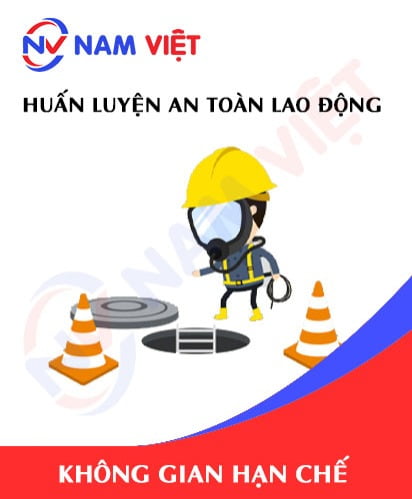
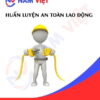
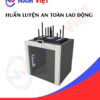




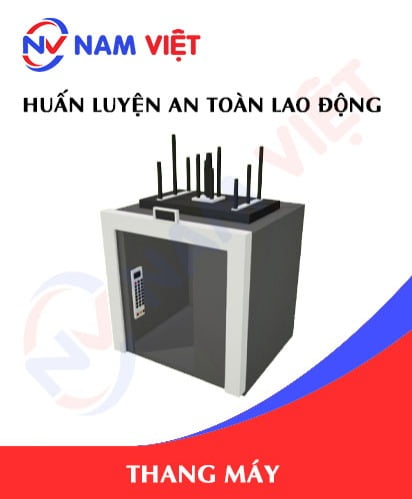
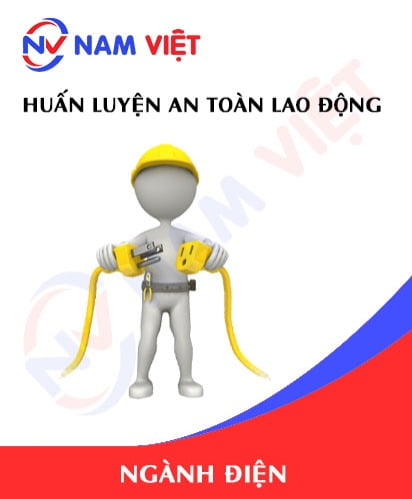
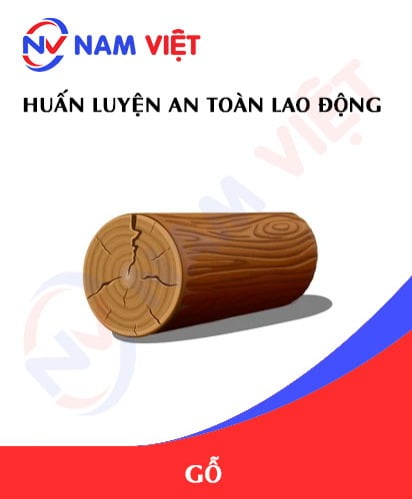
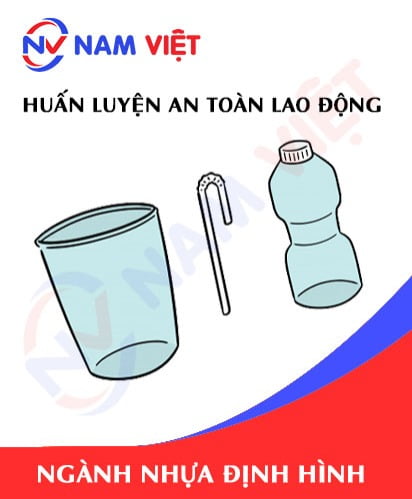
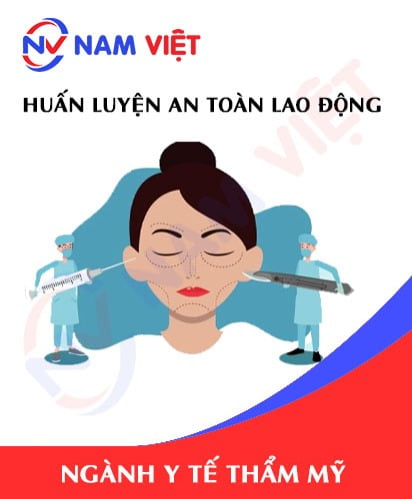
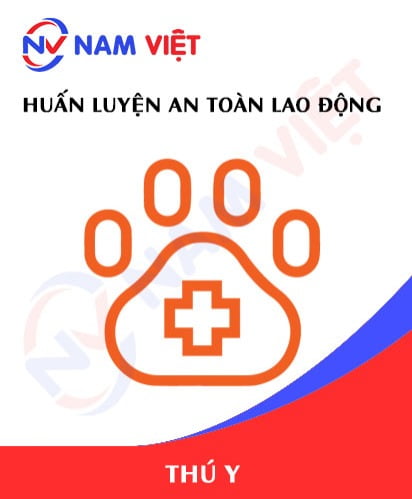
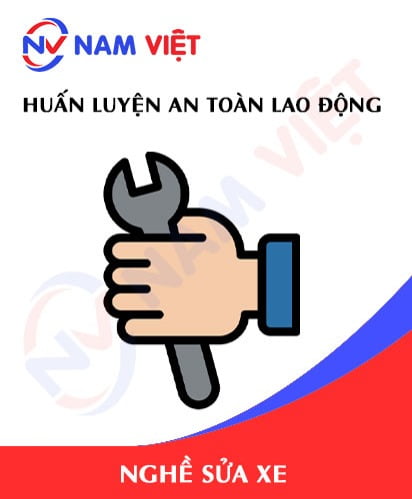
phanminhhang341
Trung tâm huấn luyện an toàn lao động chuyên nghiệp ở Việt Nam nha